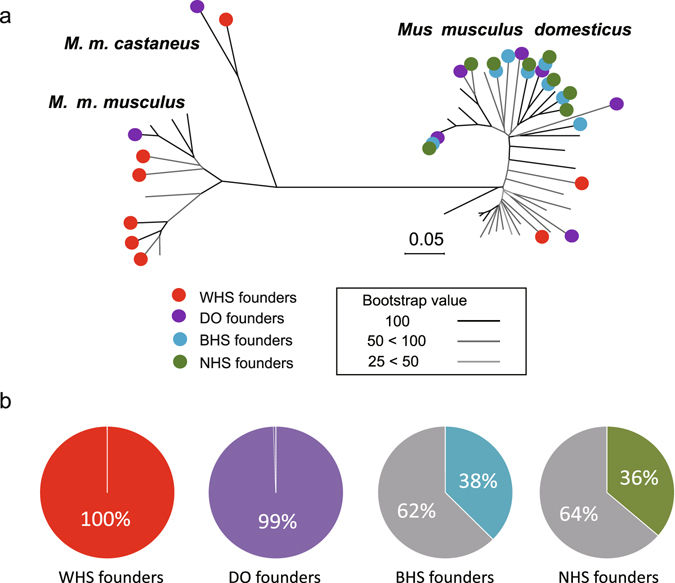新規の野生由来ヘテロジニアスストックマウスを用いた選択交配と選択マッピングにより明らかになった、従順性に関連する2つの隣接した遺伝子座
Selective breeding and selection mapping using a novel wild-derived heterogeneous stock of mice revealed two closely-linked loci for tameness
2017年7月4日 Scientific Reports 7 : 4607 doi: 10.1038/s41598-017-04869-1

従順性は家畜化に関わる主要な行動要因の1つであり、2つの候補成分に分けることができる。すなわち、ヒトに自ら近付こうとする性質(能動的従順性)と、ヒトが近付いても逃げない性質(受動的従順性)である。今回我々は、選択交配、選択マッピングおよび関連解析によって、能動的従順性に関わる遺伝子座を突き止めた。我々は実験用や野生のマウス系統を用いたこれまでの研究で、実験用マウス系統がその家畜化の過程において、能動的従順性ではなく受動的従順性に対して主に選択されたことを明らかにしている。能動的従順性に関連する遺伝的領域を特定するため、今回我々は、能動的従順性と強く関連付けられている行動パラメーターであるヒトの手への接触行動について、9世代にわたって選択交配を行った。選択交配を成功させるための必須条件は、標的とする集団内の遺伝的多様性が高いことであるため、我々は新規のリソースとして、8つの野生系統から野生由来ヘテロジニアスストック(WHS)マウスを樹立して使用した。これらのマウスには、他の異系交配マウス集団には存在しない遺伝的多様性が見られた。WHSマウスの選択交配により、世代を経るにつれてヒトの手への接触行動レベルが高まった。この選択された集団に、非選択モデルに基づくシミュレーションと一塩基多型に由来する推定ハプロタイプデータを用いて、選択マッピングを行った。その結果、選択を示すゲノム上のシグネチャーが、2つの隣接する座位を含む11番染色体で見つかった。
Corresponding Author
Tameness is a major behavioral factor for domestication, and can be divided into two potential components: motivation to approach humans (active tameness) and reluctance to avoid humans (passive tameness). We identified genetic loci for active tameness through selective breeding, selection mapping, and association analysis. In previous work using laboratory and wild mouse strains, we found that laboratory strains were predominantly selected for passive tameness but not active tameness during their domestication. To identify genetic regions associated with active tameness, we applied selective breeding over 9 generations for contacting, a behavioural parameter strongly associated with active tameness. The prerequisite for successful selective breeding is high genetic variation in the target population, so we established and used a novel resource, wild-derived heterogeneous stock (WHS) mice from eight wild strains. The mice had genetic variations not present in other outbred mouse populations. Selective breeding of the WHS mice increased the contacting level through the generations. Selection mapping was applied to the selected population using a simulation based on a non-selection model and inferred haplotype data derived from single-nucleotide polymorphisms. We found a genomic signature for selection on chromosome 11 containing two closely linked loci.

